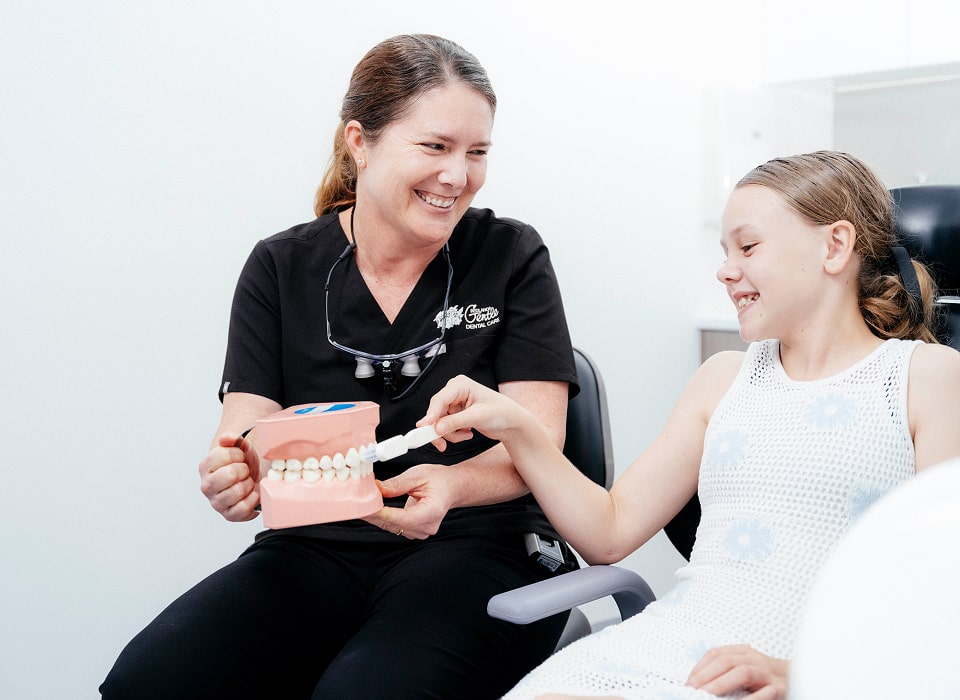Relax During Your
Next Appointment with
Safe and Soothing
Dental Sedation Available
Why Choose Us
Choose Redlands Gentle Dental Care for Trusted and Quality Dental Care Services
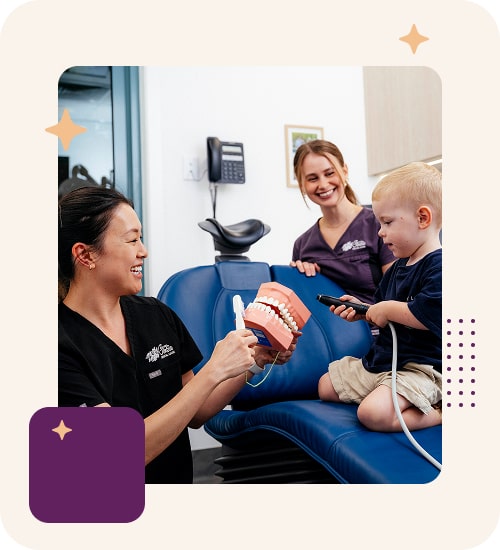
Experience Gentle, Personalised Dental Care
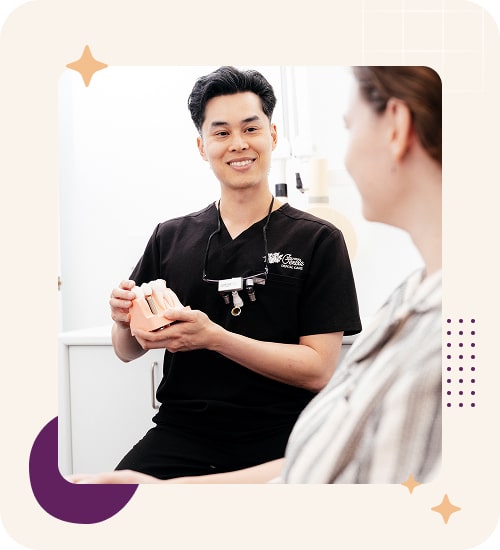
Meet Our Experienced and Empathetic Team
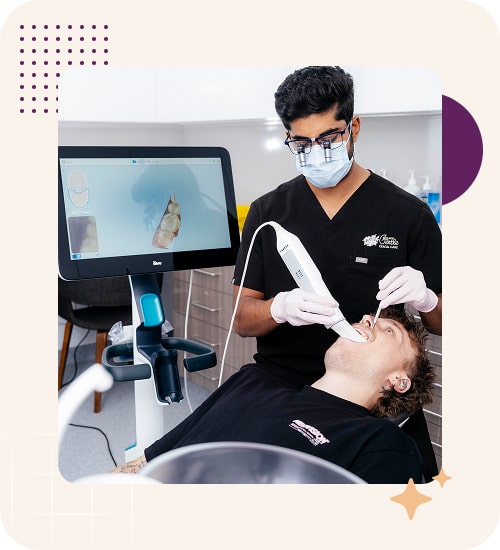
Enjoy Comprehensive Dental Services Under One Roof
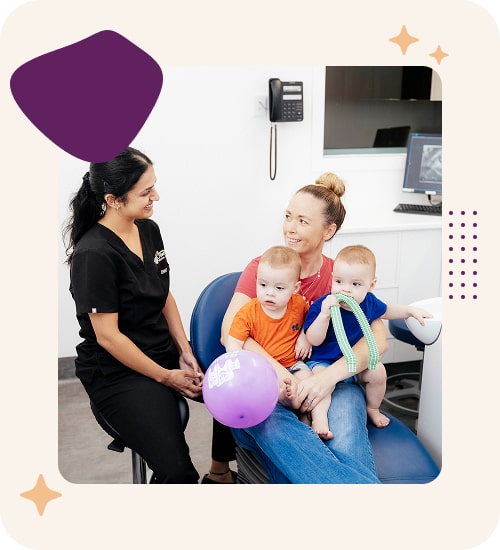
Feel at Home in Our Family-Friendly Atmosphere
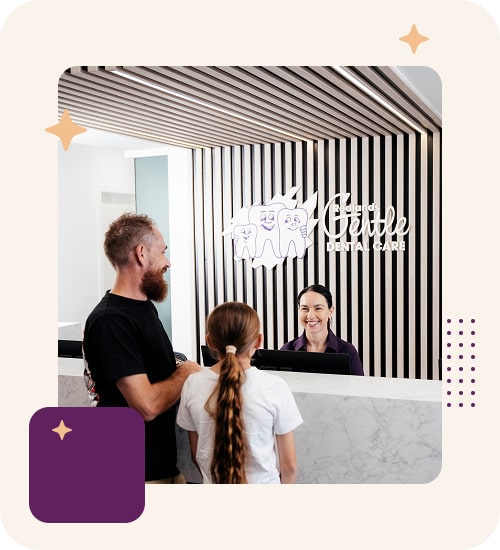
Benefit from Affordable and Transparent Pricing
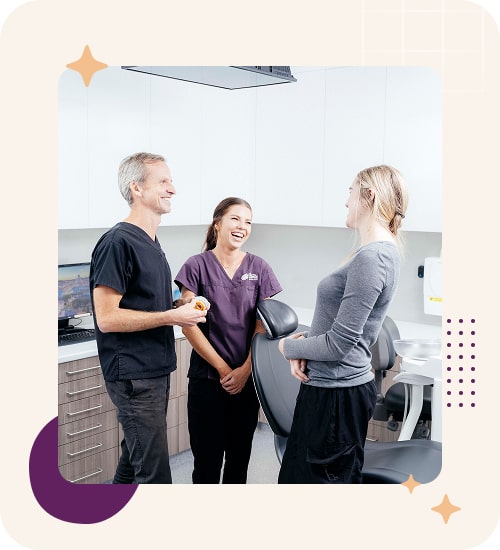
Trusted Community Pillar with 40 Years of History
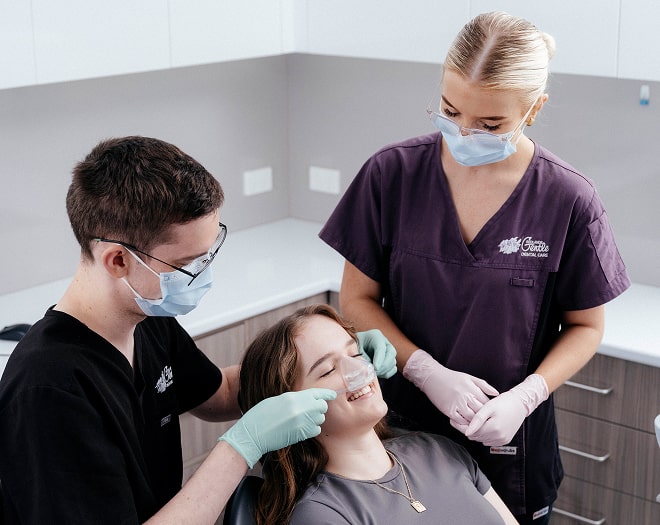
Find Comfort and Relief with Sedation Dentistry Tailored to Your
Unique Needs
Two Convenient Locations
Quality Dental Services Made Accessible for Families in the Victoria Point and Capalaba Areas
Capalaba Dental Clinic
- (07) 3245 5511
- 149 Old Cleveland Rd Capalaba, QLD, 4157
- Free Parking Available
Victoria Point Dental Clinic
- (07) 3820 7777
- 2/1 Bunker Road, Victoria Point, QLD, 4165
- Free Parking Available
Gentle Approach
Discover How Conscious Sedation Can Ease Anxiety and Improve Your Dental Visits
Experience Calm Dental Visits with Soothing, Happy Gas
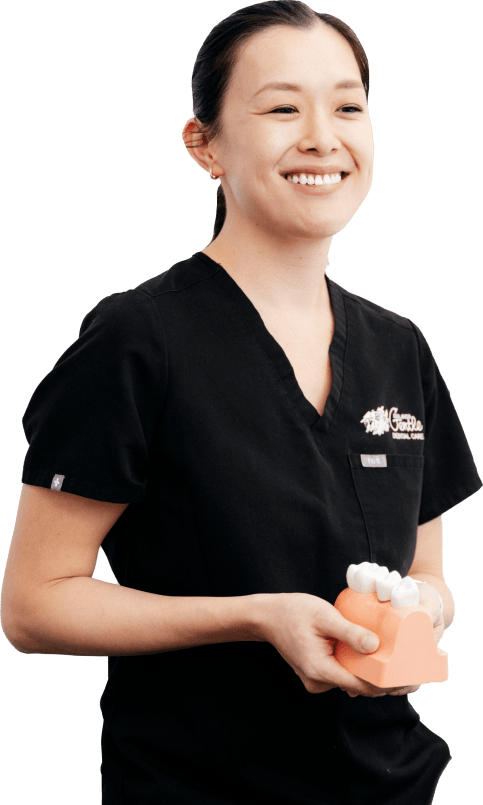
Experience the Difference of Gentle Care with Us
How We Can Help
Learn How Sedation Can Address Your Dental Problem
Unhappy With My Smile
I Have Missing Teeth
I Have a Dental Emergency
Seeking Smile Improvement
Help with Dental Anxiety
Our Payment Options
Find What Works for Your Financial Needs With Our Dental Payment Options
Child Dental Benefits Schedule
Invest in your child's smile with the Child Dental Benefits Schedule (CDBS). This government program offers eligible families financial support for essential dental services, promoting good oral health habits from an early age.
The CDBS covers up to $1,095 over two years for basic dental care like check-ups, cleanings, and fillings for children aged zero to 17. Eligibility depends on Medicare status and specific government payments, making quality dental care more accessible to families.
Learn MoreDental Services for DVA Card Holders
Veterans deserve high-quality dental care, and the Department of Veterans' Affairs (DVA) program delivers just that. The program offers dental benefits that vary based on card type.
Gold Card holders receive comprehensive cover for clinically necessary treatments, from routine check-ups to advanced procedures. White Card holders are covered for dental care related to accepted service-related conditions or mental health needs. Our clinic proudly supports veterans by providing high-quality dental care to maintain their overall health.
Learn MoreHumm
Simplify your dental care payments with Humm, a flexible financing option that lets you smile now and pay later. This interest-free payment plan allows you to spread the cost of your dental treatments over time, making essential care more accessible.
Humm is available for various dental services, from routine check-ups to more complex procedures. With instant approval and the ability to manage your account online, Humm helps you prioritise your oral health without financial stress.
Learn MoreZip
We offer Zip to help patients manage treatment costs. With credit limits between $1,000 and $50,000, eligible patients can select flexible repayment terms from three to 60 months, making it easier to manage costs.
Zip is ideal for anyone needing dental care without upfront costs. The user-friendly app allows you to track payments easily, so you can stay on budget while prioritising your oral health.
Learn MoreSuperCare
With the help of SuperCare, eligible patients can release their superannuation funds early to access essential dental procedures. This option is suitable for families lacking sufficient health funds or available resources, covering services such as orthodontics, implants, and root canal therapies.
SuperCare's consultants guide you through the straightforward application process, simplifying what can often be complex. This service enables you to prioritise your family's oral health without the burden of upfront costs.
Learn MoreAfterPay
Experience the convenience of dental care with Afterpay, allowing you to receive treatments now and pay later in four easy instalments over six weeks. This payment option is available to anyone over 18, a practical choice for adults looking to enhance and maintain oral health.
With no interest charges when payments are made on time, Afterpay promotes responsible budgeting. Payments are automatically deducted from your linked debit or credit card for a smooth experience.
Learn MoreBupa Preferred Provider
Enjoy exclusive benefits and hassle-free claims when you choose our clinic, a Bupa Preferred Provider, for your dental health needs. Our patients can access a comprehensive range of services, including check-ups and major procedures, often at reduced out-of-pocket costs.
Members First Ultimate also offers 100% back on two dental check-ups and cleans every six months, making regular oral care more affordable. Our partnership with Bupa allows you to receive quality care while maximising your benefits.
Learn MoreHCF Preferred Provider
Experience affordable, high-quality dental care at Redlands Gentle Dental Care. As an HCF preferred provider, patients with eligible dental cover can access reduced out-of-pocket costs, no-gap services for selected treatments, and streamlined claims processing.
HCF members can take advantage of these benefits by choosing our clinic for their dental needs. Check your policy to understand covered treatments and annual limits, and let us help you achieve a healthier, brighter smile.
Learn Morenib Preferred Provider
Access professional dental care at our clinic, a trusted part of nib's First Choice network. As a nib Preferred Provider, we offer members the opportunity to receive quality dental care at agreed rates. This provides a transparent and straightforward experience for your dental needs.
Nib members benefit from reduced out-of-pocket costs and simplified claims processes at our clinic. To make the most of your cover, review your policy for applicable limits and service inclusions.
Learn MoreInformation About Sedation
Frequently Asked Questions
What type of sedation is used in dentistry?
Sedation in dentistry offers various options to help patients feel more at ease during procedures. These choices range from mild to more intense forms, depending on the procedure and the patient’s needs. The most commonly used types of sedation dentistry include:
- Nitrous oxide (laughing gas):
This is a mild, fast-acting sedative that helps patients relax without causing drowsiness. It’s inhaled through a mask placed over the nose and wears off quickly after the procedure. It is an example of minimal sedation, where patients are relaxed but remain fully conscious and responsive. - Oral sedation:
For those who need a bit more relaxation, oral sedation involves taking medication before the appointment to help calm anxiety. It’s a mild sedative that keeps you awake but deeply relaxed during treatment. - Intravenous (IV) sedation:
This is used for more complex or surgical procedures. The sedative is delivered directly into the bloodstream, providing deeper levels of sedation. This may make you feel sleepy or unaware of the treatment. It can also reach deep sedation, where the patient is on the edge of consciousness but can still be roused if needed.
Sleep dentistry for anxious patients is often utilised for those who experience significant dental anxiety. Each of these sedation techniques is designed to help manage dental anxiety and discomfort. They allow patients to undergo treatment with less stress.
Is dental sedation different from anaesthesia?
Sedation and anaesthesia are both techniques used to manage patient comfort during medical procedures, but they differ in levels of consciousness and their applications. Sedation allows patients to remain awake and responsive, ranging from minimal sedation (where patients can communicate) to deep sedation (where they may not respond but can breathe independently). It is typically used for less invasive procedures, such as dental work or minor surgeries, often in combination with local anaesthesia to enhance comfort.
Anaesthesia, on the other hand, is used to block pain in specific areas or induce unconsciousness. Local anaesthesia numbs only the treatment area and is administered topically or injected. On the other hand, general anaesthesia puts patients to sleep for more complex procedures. It is administered through a combination of intravenous medications and inhaled gases, with careful monitoring throughout the procedure. While sedation dentistry focuses on comfort and relaxation, anaesthesia is specifically used for pain management. It has more profound effects on the level of consciousness.
Who is not a good candidate for nitrous oxide or laughing gas?
While nitrous oxide is safe for most patients, it may not be suitable for everyone. Those who are not good candidates include the following:
- Pregnant women:
Particularly in the first trimester, nitrous oxide should generally be avoided due to concerns about its effects on fetal development. - Respiratory conditions:
Those suffering from current upper respiratory infections (like colds or sinusitis) that cause nasal obstruction can have ineffective delivery of the gas. - Vitamin B12 deficiency:
Patients with unmanaged cobalamin deficiency or those at high risk for it (such as individuals with pernicious anaemia) should avoid nitrous oxide due to its potential to inhibit vitamin B12 metabolism, which can lead to serious hematologic and neurologic issues. - Recent ear surgery or injuries:
Patients who have had recent ear surgery or injuries may experience complications, as nitrous oxide can affect ear pressure. - Claustrophobia:
Those with severe claustrophobia may struggle with the mask required to administer nitrous oxide, as it may cause increased anxiety.
Dentists will evaluate your medical history and discuss whether nitrous oxide is suitable for you based on your individual needs. At Redlands Gentle Dental Care, we carefully assess each patient’s suitability for this type of sedation. We also address any concerns before proceeding with treatment.
What should you avoid doing before receiving nitrous oxide or laughing gas?
Before receiving nitrous oxide, there are a few precautions to take. These steps help promote the safety of dental sedation and provide a smooth experience.
- Avoid eating a large meal:
Refrain from consuming heavy food for at least two hours before your procedure. This minimises the risk of nausea or vomiting during or after dental sedation. - Limit alcohol and smoking:
Alcohol and tobacco can affect how your body responds to sedation, so avoiding these substances beforehand is important. - Inform your dentist about medications:
Discuss any medications you are taking, as these could interact with nitrous oxide. - Disclose any health issues:
Let your dentist know if you have a history of respiratory depression, breathing problems, or allergies to specific medications. - Stay hydrated but avoid excessive water intake:
While it’s important to stay hydrated, drinking too much water right before the procedure might cause discomfort.
Your dentist will also monitor your oxygen levels and provide guidelines for safe sedation in dentistry. At Redlands Gentle Dental Care, we provide guidance on steps to take before appointments for a more comfortable visit.
How is nitrous oxide administered?
Nitrous oxide, often referred to as laughing gas, is a commonly used inhalation sedation method in sleep dentistry for anxious patients. It is designed to help patients feel calm and at ease during dental procedures while remaining fully conscious. Patients who undergo conscious sedation with nitrous oxide experience relaxation without losing awareness, making it an effective option for anxiety management. Here’s how the administration process works:
- Mask placement:
A small mask is placed over the patient’s nose to deliver the nitrous oxide. This mask supports a steady, controlled delivery of the sedative. - Inhalation of gas mixture:
The patient inhales a carefully balanced mixture of nitrous oxide and oxygen. This combination promotes relaxation and helps ease anxiety within minutes. - Monitoring and adjustment:
The dentist closely monitors the patient’s response and adjusts the concentration of nitrous oxide to achieve the desired level of consciousness. - Oxygen flush:
After the procedure, the dentist administers pure oxygen through the same mask. This helps remove any remaining nitrous oxide from the system, allowing the effects to wear off quickly.
This process is designed to be non-invasive and efficient. After the oxygen flush, the effects of nitrous oxide wear off quickly. Most people can return to normal activities without lingering sedative effects.
Does nitrous oxide put you to sleep?
No, nitrous oxide does not put you to sleep. It’s a mild sedative designed to help patients relax during dental surgery procedures while remaining fully awake and aware. Nitrous oxide creates a calming effect, reducing anxiety and discomfort without causing unconsciousness. Patients can still communicate and respond to their dentist throughout the procedure.
The effects of nitrous oxide are temporary. They wear off quickly once pure oxygen is administered at the end of the treatment. This makes it a safe and efficient option for managing anxiety without the prolonged recovery time associated with deeper dental sedation methods.
Can I still feel pain with nitrous oxide or laughing gas?
Nitrous oxide, commonly known as laughing gas, can alter a patient’s perception of pain, but it does not completely eliminate the ability to feel pain during dental procedures. When administered, nitrous oxide induces a state of relaxation and reduces anxiety, which can help patients tolerate discomfort more effectively. Studies have shown that nitrous oxide can significantly raise pain thresholds and tolerance levels, meaning patients may perceive less pain or discomfort compared to when they are not under its influence. However, while it provides analgesic effects and can reduce the perception of pain, it does not render patients entirely insensible to painful stimuli.
In practice, patients may still feel sensations associated with dental work while under nitrous oxide; however, these sensations are often perceived as less intense or bothersome. The effectiveness of nitrous oxide in managing pain can vary among individuals, and some may still experience discomfort despite its use. Therefore, dentists often combine nitrous oxide with other forms of local anaesthesia to ensure a higher level of pain control during procedures.
What are the side effects of inhaling nitrous oxide?
Inhaling nitrous oxide is generally safe when administered at the right dose. However, there are potential side effects, which are usually mild and temporary. Adverse effects can include the following:
- Light-headedness:
A feeling of dizziness or light-headedness is common during or immediately after nitrous oxide use. - Nausea or vomiting:
Some patients may experience mild nausea, especially if they have eaten a heavy meal before the procedure. - Tingling sensations:
A tingling feeling in the hands, feet, or face can occur as the gas takes effect. - Shivering:
Occasionally, patients may feel cold or experience shivering after the procedure. - Fatigue:
A sense of tiredness or sluggishness may linger briefly after the sedation wears off. - Airway Compromise:
Airway compromise is rare but can happen in patients with specific medical conditions or reactions.
While these are uncommon, understanding potential side effects helps patients make informed choices about sedation in dentistry. Serious adverse outcomes, such as loss of consciousness, are extremely rare and usually result from improper administration or pre-existing conditions. Dentists carefully monitor the patient’s response throughout the procedure to minimise risks.
How long does nitrous oxide or laughing gas remain in my system?
The effects of nitrous oxide wear off quickly after the dental treatment is complete. It has a rapid onset and begins to take effect within minutes of inhalation. This helps patients feel relaxed and calm during their procedure, which results in a short sedation period without prolonged effects.
Once the treatment is finished, your dentist will administer pure oxygen through the same mask. This helps flush out any remaining nitrous oxide and usually takes just a few minutes. Most patients feel normal within 5-10 minutes after the oxygen is administered. The duration of action is brief, with the degree of sedation diminishing almost immediately. Nitrous oxide’s quick recovery time is one of the reasons it’s a popular choice for conscious sedation in dentistry.
How long does it take to recover from dental sedation?
The recovery time from sedation can vary depending on the type used. Each sedative agent has a different onset and duration of action, influencing how quickly you can resume normal activities. Here’s an overview of what to expect:
- Nitrous Oxide (Laughing Gas):
After the procedure, the effects wear off within 5-10 minutes. This allows patients to feel alert and ready to continue with their day. Laughing gas is an ideal option for those seeking conscious sedation. It provides a comfortable and quick recovery. - Oral Sedation:
Oral sedatives typically have a longer duration of action. The recovery time may last several hours, and you may feel dizzy or tired after the procedure. It’s important to rest and avoid complex activities or driving until the effects have worn off. - Intravenous (IV) Sedation:
IV sedation induces a deeper level of sedation, which requires more time to recover. The effects can last several hours, and you may feel tired or disoriented for a while after the procedure. Recovery time will vary, depending on the dosage and the procedure. Patients should refrain from driving and should have a carer assist them until they feel fully recovered.
Each type of sedation affects your body differently, and the dose and the specific procedure influence the recovery time. Your dentist will assess your needs, guide you in managing your recovery and support you so that you feel comfortable and safe as the effects wear off.
What activities should I avoid after dental sedation?
After receiving sedation, it’s essential to take certain precautions. Depending on the type of sedative used, you may experience temporary side effects. These could impact your ability to perform daily tasks. Here are some important things to avoid:
- Driving:
It’s crucial not to drive after the procedure, as sedation agents can impair your reflexes, coordination, and judgment. You should arrange for a friend or family member to drive you home following the procedure. - Operating Heavy Machinery:
Similar to driving, operating heavy machinery or engaging in complex tasks should be avoided until you are fully alert. The effects of the sedative drug may linger for a while, affecting your cognitive function and motor skills. - Consuming Alcohol:
Avoid drinking alcohol for at least 24 hours after receiving sedation. Combining alcohol with sedatives can increase the risk of adverse reactions, including respiratory depression, blood pressure fluctuations, and excessive drowsiness. - Strenuous Activity:
After sedation, it’s a good idea to rest and refrain from any strenuous physical activity. Your body needs time to recover from the sedative, and heavy exercise may cause unnecessary stress on your system. - Eating Heavy Meals:
Eating a large or heavy meal immediately after sedation can cause discomfort or nausea. It’s better to stick with light, easily digestible foods until you’re fully recovered.
Following these guidelines will help support a smoother recovery after your sedation. At Redlands Gentle Dental Care, we focus on your well-being throughout your entire experience. We provide detailed aftercare instructions and intensive care for patient satisfaction to help you feel comfortable during your recovery.
